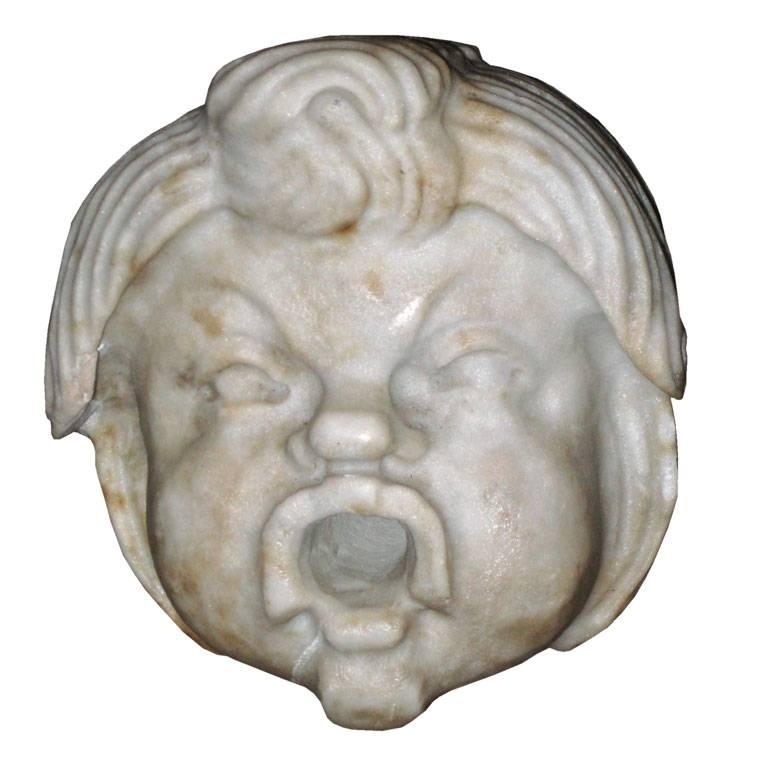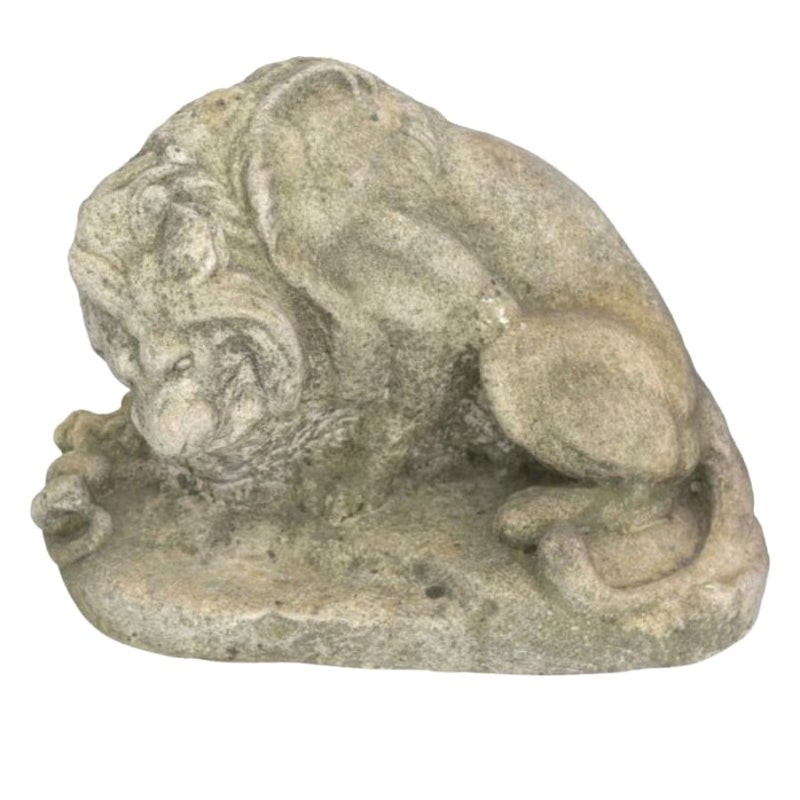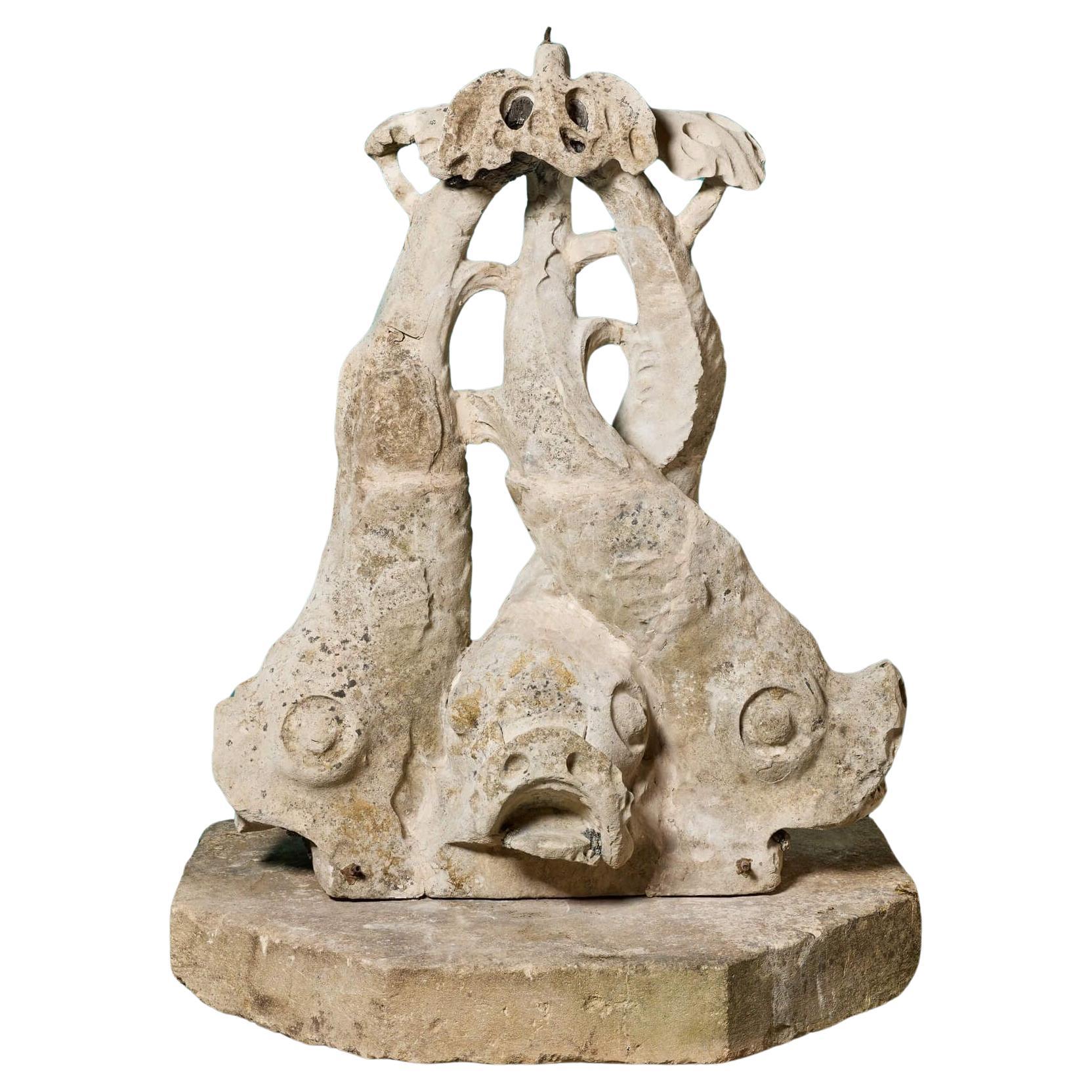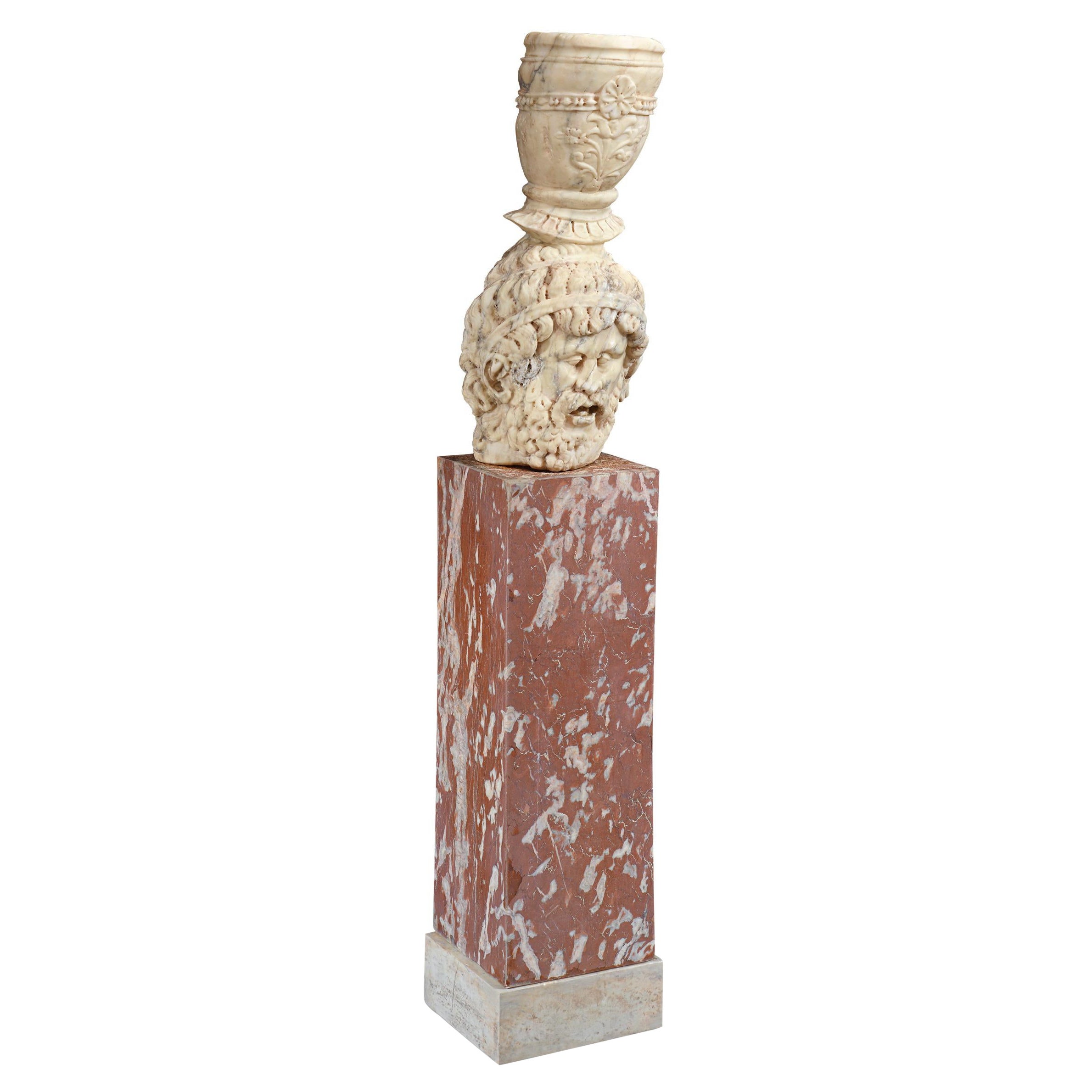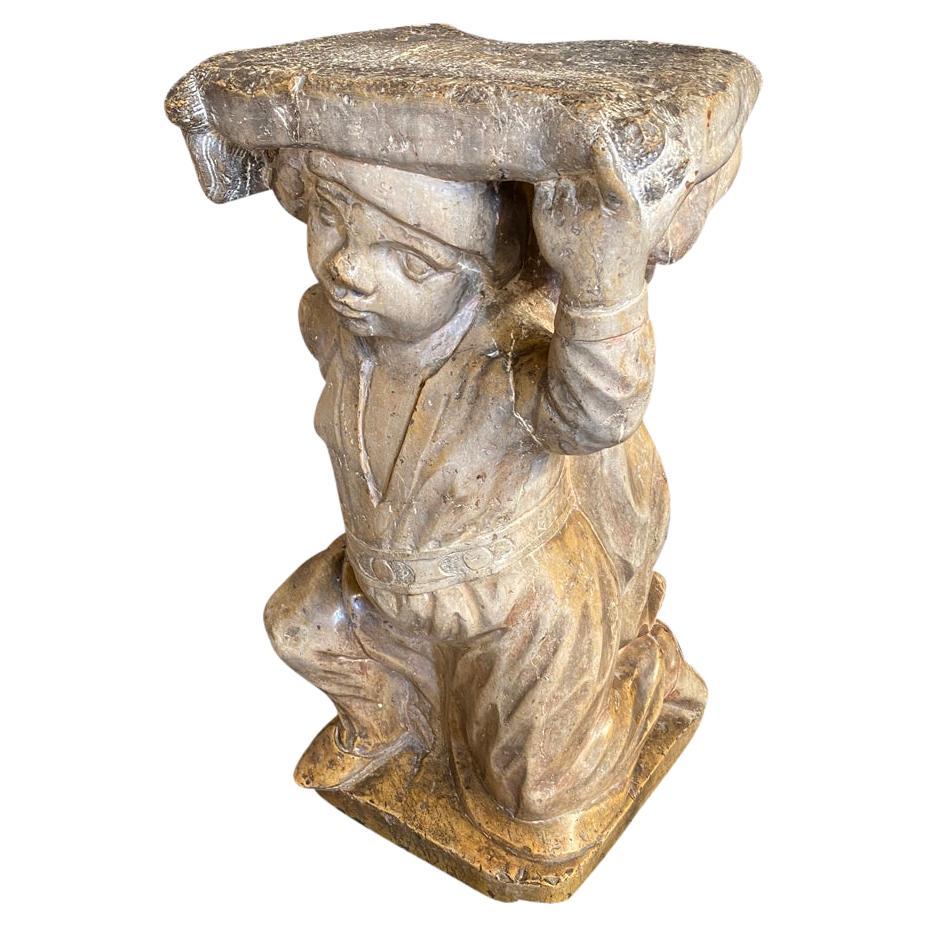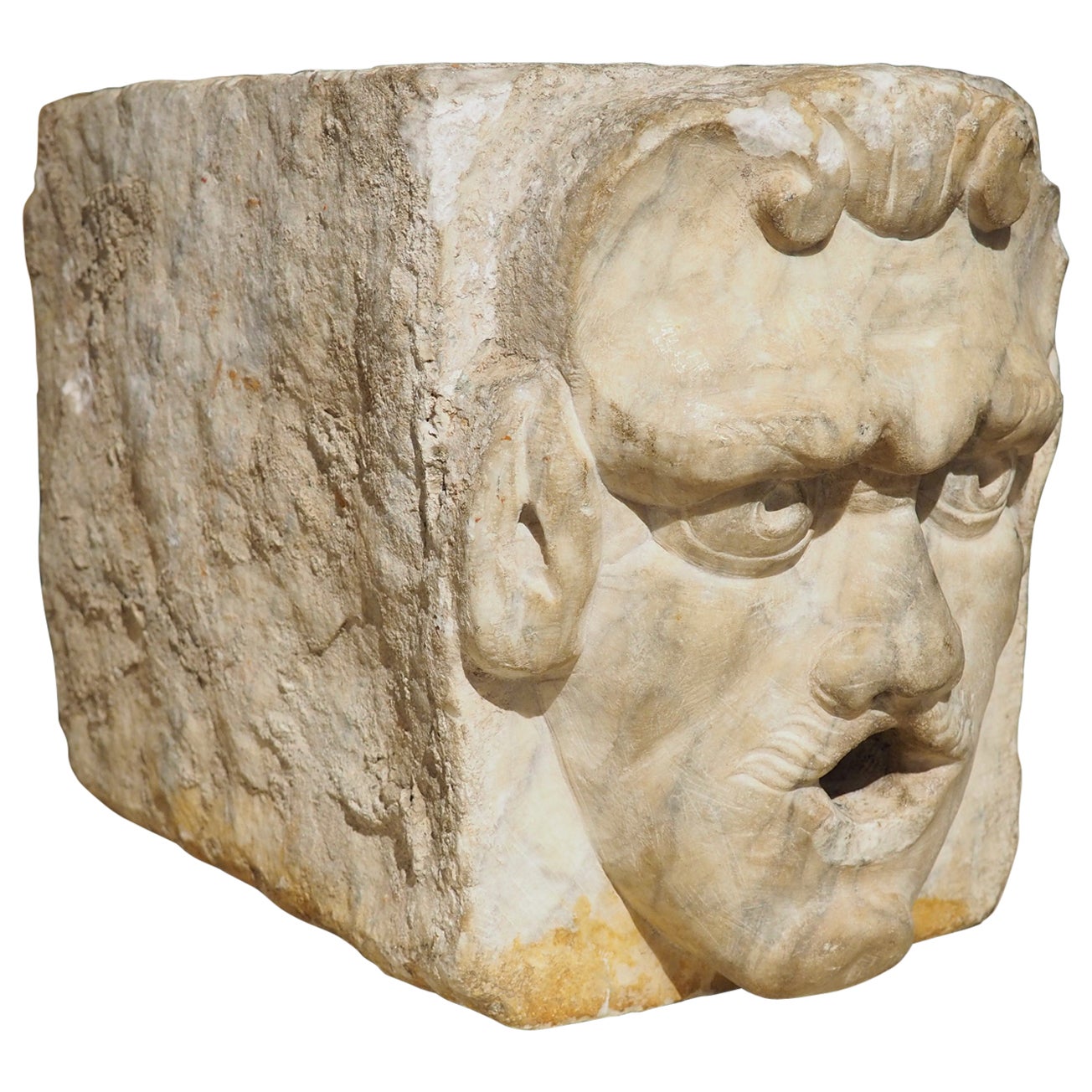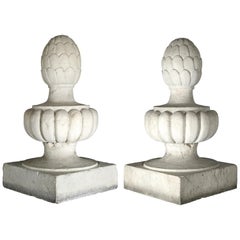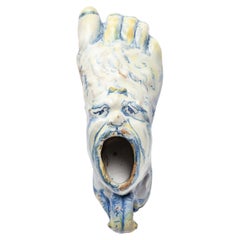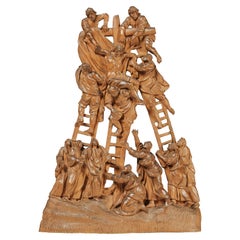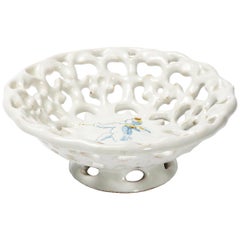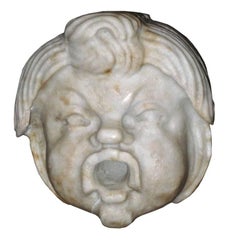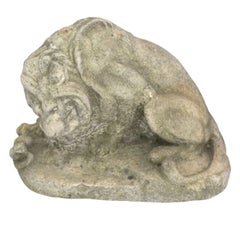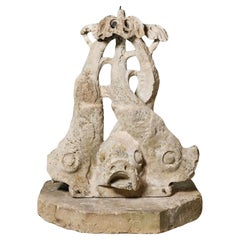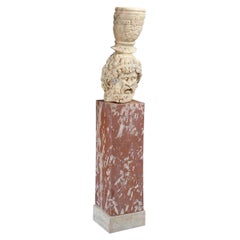Items Similar to Italian Ancient Marble Sculpture Fountain, Late 16th Century
Video Loading
Want more images or videos?
Request additional images or videos from the seller
1 of 21
Italian Ancient Marble Sculpture Fountain, Late 16th Century
$14,366.10
£10,597.21
€12,000
CA$19,904.94
A$21,599.90
CHF 11,446.04
MX$264,912.25
NOK 141,643.96
SEK 133,846.04
DKK 91,377.71
About the Item
Sea monster
Carrara marble mouth fountain
Italy, late 16th century
It measures 13.8 x 31.5 x 18.9 in (35 x 80 x 48 cm)
State of conservation: some small evident gaps and widespread signs of wear due to outdoor exposure. The gray marks crossing it do not come from restoration, but are rather the natural veins of the marble.
This work has some morphological characteristics typically associated with the iconography of the sea monster: an elongated muzzle, sharp teeth, protruding eyes, elongated ears, and a coiled serpent's tail.
An in-depth series of studies on artistic depictions of the sea monster attempted to verify how this symbol evolved in antiquity in the European and Mediterranean contexts and how it gradually changed its image and function over time. The iconography itself is mutable and imaginative and its history is rich with cultural and artistic exchange, as well as the overlapping of ideas. This occurred so much that it is difficult to accurately pinpoint the "types" that satisfactorily represent its various developments.
However, we can try to summarize the main figures, starting from the biblical Leviathan and the marine creature that swallowed Jonah (in the Christian version, this figure was to become a whale or a "big fish", the “ketos mega”, translation of the Hebrew “dag gadol”). Other specimens ranged from the dragons mentioned in the Iliad (which were winged and had legs) to "ketos” (also from Greek mythology), the terrifying being from whose Latinized name (“cetus”) derives the word "cetacean". See J. Boardman, “Very Like a Whale” - Classical Sea Monsters, in Monsters and Demons in the Ancient and Medieval Worlds, in Papers presented in Honor of Edith Porada, Mainz am Rhein 1987, pp. 73-84).
In Italy the monster underwent yet further variations: it can be found in Etruscan art on the front of some sarcophagi representing the companion of souls, while among the Romans we find the “Pistrice” (cited by Plinio in Naturalis Historia PLIN., Nat., II 9, 8 and by Virgilio in Eneide: VERG., Aen., III, 427), which appeared in the shape of a stylized hippocampus or a very large monstrous cetacean and evolved into a hideous being with a dragon's head and long webbed fins.
During the Middle Ages, the sea monster was the object of new transformations: at this time, it is often winged, the head is stretched like a crocodile, the front legs are often very sharp fins - sometimes real paws - until the image merges with dragons, the typical figures of medieval visionary spirituality widely found throughout Europe (on this topic and much more, see: Baltrušaitis, J., Il Medioevo fantastico. Antichità ed esotismi nell’arte gotica, Gli Adelphi 1997).
In Italy during the 15th and 16th centuries, the revival of classicism - representative of the humanistic and Renaissance periods - led to a different reading of these "creatures". Indeed, the sea monster was also to find widespread use as an isolated decorative motif, especially in numerous fountains and sculptures where dolphins or sea monsters were used as a characterizing element linked to water (on this theme see: Chet Van Duzer, Sea Monsters on Medieval and Renaissance Maps, London, The British library, 2013).
From the morphological point of view, the "sea monsters" of this period are mostly depicted as hybrid figures, in which the body of a mythological or real being (a hippocampus, a sea snake, a dolphin), is joined to a head with a rather indistinct appearance. It was usually characterized by large upright ears, an elongated snout, sharp teeth and globular, protruding eyes; a complex and indefinite figure, both from the symbolic point of view and from that of its genesis.
The work we are examining is placed as a cross between the medieval sea serpent and the Renaissance dolphin, with stylistic features which recall the snake as often used in heraldry (such as the "snake" depicted in the coat of arms of the Visconti - the lords and then dukes of Milan between 1277 and 1447 - and which, for some, may be derived from the representations of the “Pistrice” that swallowed Jonah).
In the search for sources, Renaissance cartography and in particular woodcuts should not be neglected. See for example the monsters of Olaus Magnus, from the editions of the “Historia de gentibus septentrionalibus” (“History of the peoples of the north”) and the natural histories of Conrad Gesner, Ulisse Aldrovandi, Edward Topsell and John Jonston dated from 1555-1665 (Van Duzer, Sea Monsters on Medieval and Renaissance Maps, London, The British library, 2013).
From a chronological point of view, our sculpture can be placed circa end of the 16th century, during the time when the revival of classicism, and the iconography associated with it had already been metabolized and more casual reworking were beginning to be distinguished, forming a prelude to the Baroque style.
This work is indisputably Italian, but it is more difficult to define its precise area of origin.
There is no lack of examples, but they are scattered over a very wide territory, ranging from Tuscany to Naples.
We point out, in particular, one that, from the iconographic point of view, seems the closest to our monster: the fountain of the Siren in Carrara, in front of the Chiesa delle Lacrime (Church of Tears).
Bibliography
J. Boardman, “Very Like a Whale” - Classical Sea Monsters, in Monsters and Demons in the Ancient and Medieval Worlds. Papers presented in Honor of Edith Porada, a cura di, Mainz am Rhein 1987, pp. 73-84;
J. Baltrušaitis, Il Medioevo fantastico. Antichità ed esotismi nell’arte gotica, Gli Adelphi, 1997;
Chet Van Duzer, Sea Monsters on Medieval and Renaissance Maps, London, The British library, 2013;
S. Riccioni, Dal ketos al senmurv? Mutazioni iconografiche e transizioni simboliche del ketos dall'antichità al Medioevo (secolo XIII) in Hortus Artium Medievalium, vol. 22, 2016, pp. 130-144;
A. Angelini, Dal leviatano al drago: mostri marini e zoologia antica tra Grecia e Levante, Bologna, 2018.
- Dimensions:Height: 13.78 in (35 cm)Width: 18.9 in (48 cm)Depth: 31.5 in (80 cm)
- Style:Renaissance (Of the Period)
- Materials and Techniques:
- Place of Origin:
- Period:
- Date of Manufacture:circa 1580
- Condition:Minor losses. Minor structural damages. Minor fading. Some small evident gaps and widespread signs of wear due to outdoor exposure. The gray marks crossing it do not come from restoration, but are rather the natural veins of the marble.
- Seller Location:Milano, IT
- Reference Number:1stDibs: LU4352222057302
About the Seller
4.3
Vetted Professional Seller
Every seller passes strict standards for authenticity and reliability
Established in 1860
1stDibs seller since 2018
21 sales on 1stDibs
Associations
International Confederation of Art and Antique Dealers' Associations
- ShippingRetrieving quote...Shipping from: Milano, Italy
- Return Policy
Authenticity Guarantee
In the unlikely event there’s an issue with an item’s authenticity, contact us within 1 year for a full refund. DetailsMoney-Back Guarantee
If your item is not as described, is damaged in transit, or does not arrive, contact us within 7 days for a full refund. Details24-Hour Cancellation
You have a 24-hour grace period in which to reconsider your purchase, with no questions asked.Vetted Professional Sellers
Our world-class sellers must adhere to strict standards for service and quality, maintaining the integrity of our listings.Price-Match Guarantee
If you find that a seller listed the same item for a lower price elsewhere, we’ll match it.Trusted Global Delivery
Our best-in-class carrier network provides specialized shipping options worldwide, including custom delivery.More From This Seller
View AllItalian Ancient Botticino Marble Pair of Pinnacles, circa 1850
Located in Milano, IT
Pair of pinnacles
Northern Italy, mid-19th century
Botticino marble, carved
They measure 33.1 inches in height x 17.7 x 17.7 (84 cm x 45 x 45)
State of conservation: some visible cracks and various small gaps.
The two twin architectural elements of sculpted Botticino marble have a quadrangular base from which a chalice-shaped foot extends. Resting on this, a round pod-like element swells up to support a large pine cone. This is the main decoration: however, the other ornamental details enhance and embellish it, while exalting its position above, whether observed from afar or up close.
These aesthetic characteristics suggest that originally the pair of pinnacles were placed on columns or on architectural plinths...
Category
Antique 1850s Italian Other Architectural Elements
Materials
Marble
Renaissance Inkwell Calamelli workshop, Italy, Faenza, second half of the 16th
By Virgiliotto Calamelli
Located in Milano, IT
Inkwell
Calamelli workshop (attr.).
Faenza, second half of the 16th century
Height 4.33 in; length 8.07 in; depth 2.95 in (11 cm; 20.5 cm; 7.5 cm)
Weight: 0.800 lb (363 g)
State of conservation: some chipping to the top of the mask around the mouth. Handle glued, without any restorations; minor chips in some raised areas.
This object has the shape of a foot wearing Greek-style footwear, as can be seen in some raised areas. The foot is anatomically modeled with bare toes, while the ankle is partially covered by the footwear. On the heel, there is a small circular handle to support the object. The mouth of the container is shaped like a mask. The interior, completely enameled, suggests that the piece was intended to be used as an inkwell or to contain some other liquid. The base, however, is not enamelled.
The painted decoration, scant and brief, consists of rapid cobalt blue shading between the toes of the foot, with more precise emphasis on the nails. It is accompanied by yellow citrine accents to enhance the forms. The mask is painted with the tip of the brush, to accentuate the tense nature of the eyes and to accentuate their outline. Thin strokes of yellow-orange line the interior of the mouth.
Since the Renaissance, this decoration has been referred to as "compendiaria" and it characterizes the period of production extending from the mid-16th century to approximately the middle of the following century. It significantly influenced tastes at the time. It evolved from the polychrome style "istoriato" and transformed into a new style that "summarized" (compendia), or condensed, the ornamentation of the works into a few colors, placing greater prominence on the shapes. It was often inspired by metal specimens. Since the Renaissance, this decoration has been referred to as "compendiaria" and it characterizes the period of production extending from the mid-16th century to approximately the middle of the following century. It significantly influenced tastes at the time. It evolved from the polychrome style "istoriato" and transformed into a new style that "summarized" (compendia), or condensed, the ornamentation of the works into a few colors, placing greater prominence on the shapes. It was often inspired by metal specimens.
This artwork finds parallels in similar objects all characterized by this refined style and produced in the city of Faenza and other Italian centers starting from the mid-16th century.
The closest comparable example in majolica is a foot acquired by the British Museum in 2011 (inv. 2011, 8008.1). This was previously published by Carmen Ravanelli Guidotti in 1996 and later by Dora Thornton in 2016 during the conference on Renaissance ceramics...
Category
Antique 16th Century Italian Renaissance Inkwells
Materials
Maiolica
Ancient Boxwood Micro Carving Deposition, First Half of the 18th Century
Located in Milano, IT
Boxwood micro carving
Deposition
Central Europe, first half of the 18th century
It measures: the sculpture 7.40 x 5.31 x 0.6 in (18.8 x 13.5 x 1.6 cm); w...
Category
Antique 1740s European Baroque Figurative Sculptures
Materials
Boxwood
Ancient Italian Renaissance Maiolica Crespina, Faenza, 1580 Circa
Located in Milano, IT
Crespina
Faenza, last quarter of the 16th century
Maiolica painted in two colors, light blue and yellow, on a thick, rich layer of white enamel.
It measures 2.24 in (5.7 cm) in height, 6.10 in (15.5 cm) in diameter.
lb 0.55 (kg 0.25)
State of conservation: mimetic restoration.
The small cup has a raised central “umbone”, a perforated brim and a shaped rim. It rests on a high jutting foot. The "crespina" shape, in some inventories is cited as "tacce de frute" (fruit cups). It was particularly appreciated in the Renaissance and has variants based on the formal types and the different sizes. The decoration, made according to the dictates of the “compendiario” style, used few standardized colors: blue and yellow on a thick white and shiny enamel, deliberately chosen as the colour which was most reminiscent of silver. This choice derived from a trend in creative design of the era: the shapes used in the molds were often taken from metal objects. An idea which would last throughout the Renaissance.
The work shows, in the middle of the “umbone”, a winged putto stepping forward while playing a long thin trumpet.
The depiction of the putto is fully representative of the repertoire of the Faenza workshops of the sixteenth century.
Some specimens with this type of decoration have been published in a volume by Carmen Ravanelli Guidotti: there appears the whole productive repertoire of this fundamental moment of transition between the taste for the “istoriato” style and the great simplification of decoration in the “compendiario” period. This style, in its simplicity, however, saw its expression in a rather varied collection of decorative subjects, including old-fashioned busts...
Category
Antique 16th Century Italian Renaissance Ceramics
Materials
Maiolica
19th Century Italian Wood Mannequin, Circa 1870-1880
Located in Milano, IT
Mannequin
Sculpted and carved wood
Italy or France, second half of the 19th century.
It measures 25.59 x 6.29 x 3.54 in (65.5 x 16 x 9 cm)
It weighs 2.2 lb circa (1 kg circa)
St...
Category
Antique 1870s Italian Other Figurative Sculptures
Materials
Wood
Late 19th Century Italian Wood Mannequin, circa 1880
Located in Milano, IT
Atelier mannequin
graven and carved stone pine wood
Italy, late 19th century
Measures: H 102 cm x 25 cm x 14 cm
H 40.15 in x 9.84 in x 5.51 in
Weight: circa kg 4
State of conse...
Category
Antique 1880s Italian Other Figurative Sculptures
Materials
Wood
You May Also Like
Early 19th Century Italian Marble Fountain
Located in Water Mill, NY
Early 19th century Italian hand-carved marble fountain in a form of a putto.
Category
Antique 19th Century Italian Fountains
Sculpture from the 19th Century in Direct-Cut Marble "The Lion with the Snake"
Located in Marseille, FR
19th century sculpture in direct-cut marble "The lion with the snake" from the Tuileries garden, the work from the Tuileries garden was executed by Antoine Louis Barye dimension heig...
Category
Antique 19th Century Animal Sculptures
Materials
Marble
Grand Antique Carved Portland Stone Fountain
Located in Wormelow, Herefordshire
A grand antique mid 19th century hand-carved Portland stone fountain with intwined fish. Previously a fountain from the grounds of the Royal Observatory, in London, its large scale a...
Category
Antique Late 19th Century English Victorian Fountains
Materials
Stone
Tulio Lombardo Style Marble Fountain
Located in New Orleans, LA
This marble fountain sculpture in the style of Tulio Lombardo embodies the glory of Renaissance sculpture. Reminiscent of classical portrait busts, a bearded man's face serves as the...
Category
Antique 17th Century Italian Renaissance Fountains
Materials
Marble
Mid-17th Century Italian Marble Sculpture
Located in Round Top, TX
A spectacular mid-17th century Venetian Sculpture - "Enfant Au Coussin" - Enfant With Pillow. Expertly carved from Verona Marble. An architectural element originally serving as a b...
Category
Antique Mid-17th Century Italian Figurative Sculptures
Materials
Marble
15th or 16th Century Marble Gargoyle Fountain Spout from Arezzo, Italy
Located in Dallas, TX
Although when most people hear the word “gargoyle”, they probably envision small, winged creatures with grotesque visages. However, the phrase has a deeper meaning, encompassing any carved head (animal or human) that function as waterspouts.
From the Early Renaissance (late 1400’s/early 1500’s), our gargoyle fountain spout features a human-like face with pointed ears, possibly representing a centaur or a satyr. The roughly rectangular block of marble was hand-carved in Arezzo, in the Tuscany region of Italy. All sides except the front of the cream-colored stone have a sawed finish, resulting in a rough texture. The back has been excavated, adding to the character of the gargoyle. A 1 ½” diameter hole has been cut all the way through, forming an open mouth of the gargoyle. The gaping mouth was often a symbol used to conjure images of devouring giants and used to remind people that they are susceptible to certain forces.
Our 15th/16th century marble...
Category
Antique 16th Century Italian Renaissance Fountains
Materials
Marble
More Ways To Browse
16th Century Italian
16th Century Italian Furniture
Late Renaissance Italy
Italian Renaissance Marble
Sea Monster
London Antique Maps
Sea Serpent
Medieval Cross
Black Bear Sculptures
Tiger Sculptures
Silver Animals Sterling
Antique Metal Animals
Chinese Foo Dog
Bronze Bull
Small Animal Sculpture
Finland Sculpture
Black Forest Bear
Toucan Toucan
